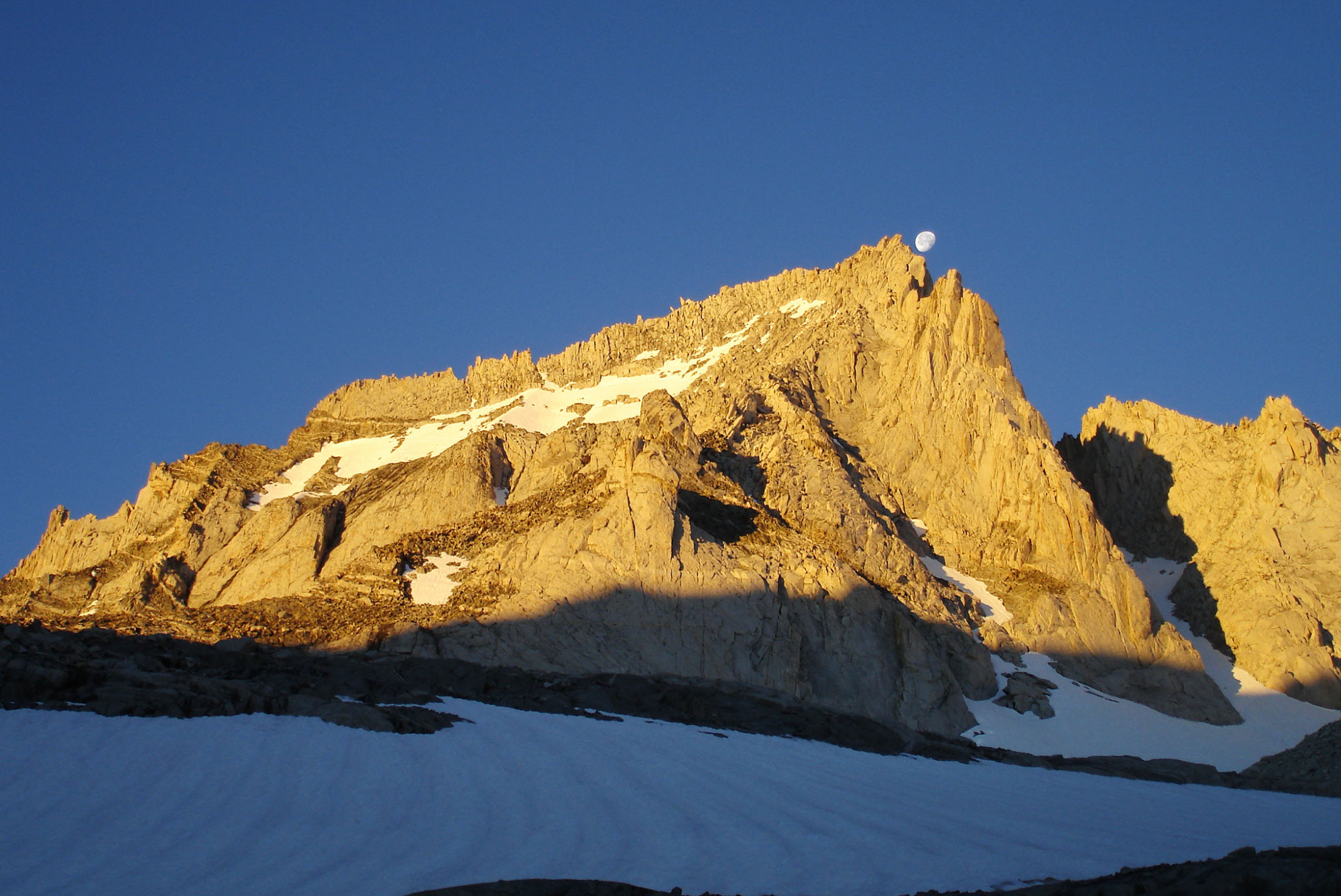As ascent of Bear Creek Spire provides one of the finest views in the central Sierra from start to finish. The Northeast Ridge offers fourth-class climbing, with a spectacular ridge traverse to the summit. The shady North Buttress is best climbed in the summer and offers 5.8 climbing before joining the Northeast Ridge.
North Arete: 5.8
Most of the climbing on the initial part of the arete is 5.7. About halfway up a short steep area is reached and is passed via a 5.8 chimney/crack pitch. This is followed by an interesting pitch with a tunnel move, which leads to easier fourth-class terrain. We briefly move off the summit ridge onto the west side before the final 40 feet to the top. The actual summit is typical of many Sierra peaks. A monolithic block with no cracks and plenty of exposure. Luckily the summit register is below this final obstacle. The descent begins with one long rappel and then a simple scramble back to the base. Usually, there is quite a bit of easy snow on the return.
Northeast Ridge: 5.4
The climbing on this ridge is a lot easier than the North Arete, which it joins a few hundred feet below the summit. From the moraine we turn left and head over to Peppermint Col at just below 13,000’, overlooking beautiful Spire Lake in the Pine Creek drainage. We rope up here and move through increasingly difficult third and fourth-class terrain as the ridge gradually steepens and narrows. Occasional belays and easy stretches make up most of the climb. The upper ridge is certainly exposed, but the views over the valleys and desert should be more than enough to distract you. We do the same maneuvers to gain the summit and descend the same way as the North Arete.
Prerequisites
You should be in good physical condition, have prior backpacking and outdoor climbing experience. We strongly recommend prior experience traversing loose uneven slopes with a moderate pack. Experience at altitudes above 10,000’ is required. More specifically:
North Arête: Prior experience climbing at the 5.8 level and prior experience on multi-pitch routes.
Northeast Ridge: Prior experience with roped climbing, as well as ice axe and crampon use.
Inclusions
Price includes guiding, permits, group climbing gear, tents, kitchen gear, breakfasts, and dinners (you bring lunches, hot/cold drinks, and snack items).
Acclimatization & Physical Training
For proper acclimatization, we suggest spending at least one night at a moderate altitude, higher than 8,000 feet, just prior to the start of the journey. See our detailed tips on acclimatizing and physical training in the “Resources” tab.












Get Social